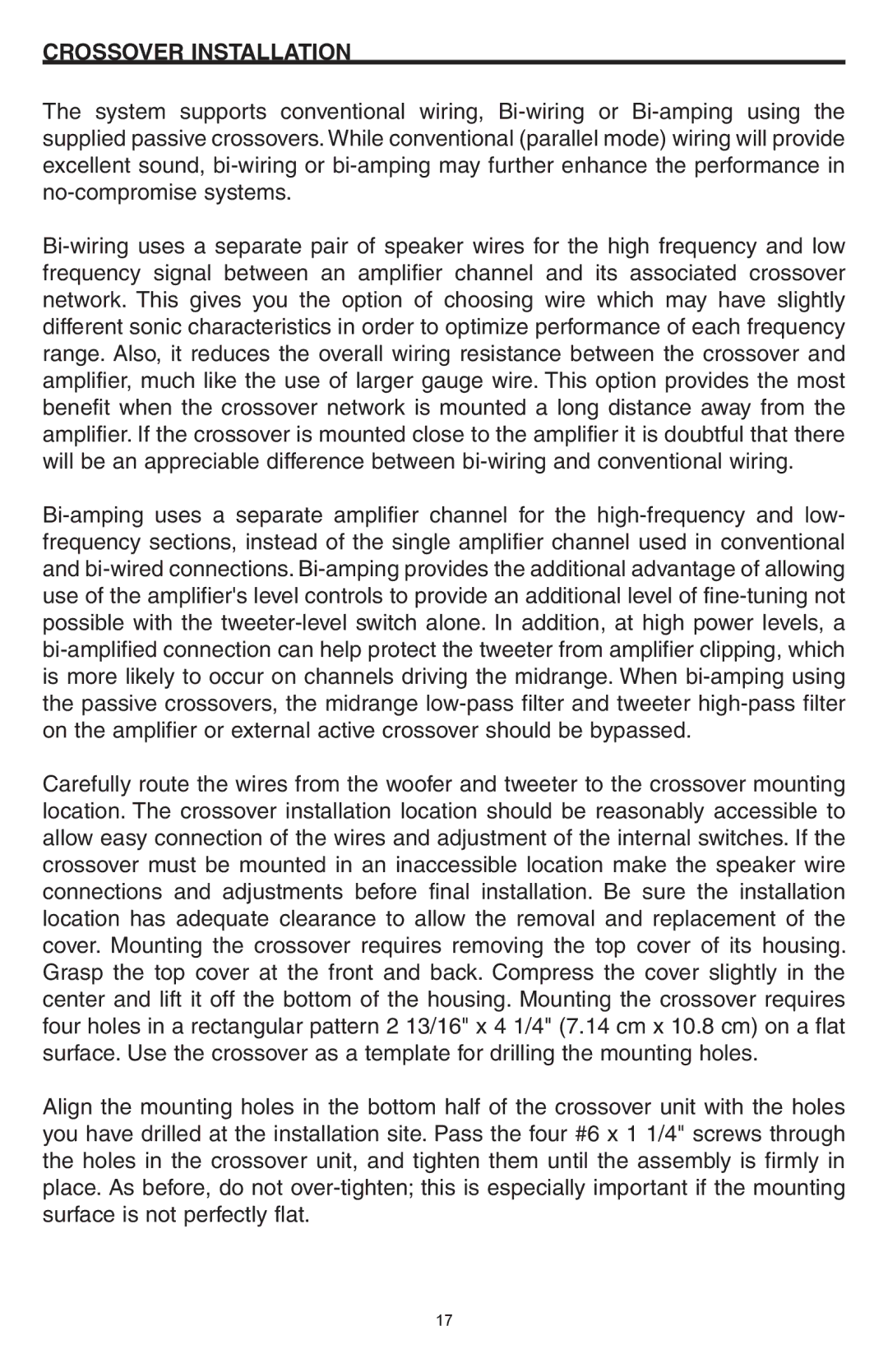
Crossover INSTALLATION
The system supports conventional wiring, Bi-wiring or Bi-amping using the supplied passive crossovers.. While conventional (parallel mode) wiring will provide excellent sound, bi-wiring or bi-amping may further enhance the performance in no-compromise systems..
Bi-wiring uses a separate pair of speaker wires for the high frequency and low frequency signal between an amplifier channel and its associated crossover network.. This gives you the option of choosing wire which may have slightly different sonic characteristics in order to optimize performance of each frequency range.. Also, it reduces the overall wiring resistance between the crossover and amplifier, much like the use of larger gauge wire.. This option provides the most benefit when the crossover network is mounted a long distance away from the amplifier.. If the crossover is mounted close to the amplifier it is doubtful that there will be an appreciable difference between bi-wiring and conventional wiring..
Bi-amping uses a separate amplifier channel for the high-frequency and low- frequency sections, instead of the single amplifier channel used in conventional and bi-wired connections.. Bi-amping provides the additional advantage of allowing use of the amplifier's level controls to provide an additional level of fine-tuning not possible with the tweeter-level switch alone.. In addition, at high power levels, a bi-amplified connection can help protect the tweeter from amplifier clipping, which is more likely to occur on channels driving the midrange.. When bi-amping using the passive crossovers, the midrange low-pass filter and tweeter high-pass filter on the amplifier or external active crossover should be bypassed..
Carefully route the wires from the woofer and tweeter to the crossover mounting location.. The crossover installation location should be reasonably accessible to allow easy connection of the wires and adjustment of the internal switches.. If the crossover must be mounted in an inaccessible location make the speaker wire connections and adjustments before final installation.. Be sure the installation location has adequate clearance to allow the removal and replacement of the cover.. Mounting the crossover requires removing the top cover of its housing.. Grasp the top cover at the front and back.. Compress the cover slightly in the center and lift it off the bottom of the housing.. Mounting the crossover requires four holes in a rectangular pattern 2 13/16" x 4 1/4" (7..14 cm x 10..8 cm) on a flat surface.. Use the crossover as a template for drilling the mounting holes..
Align the mounting holes in the bottom half of the crossover unit with the holes you have drilled at the installation site.. Pass the four #6 x 1 1/4" screws through the holes in the crossover unit, and tighten them until the assembly is firmly in place.. As before, do not over-tighten; this is especially important if the mounting surface is not perfectly flat..
